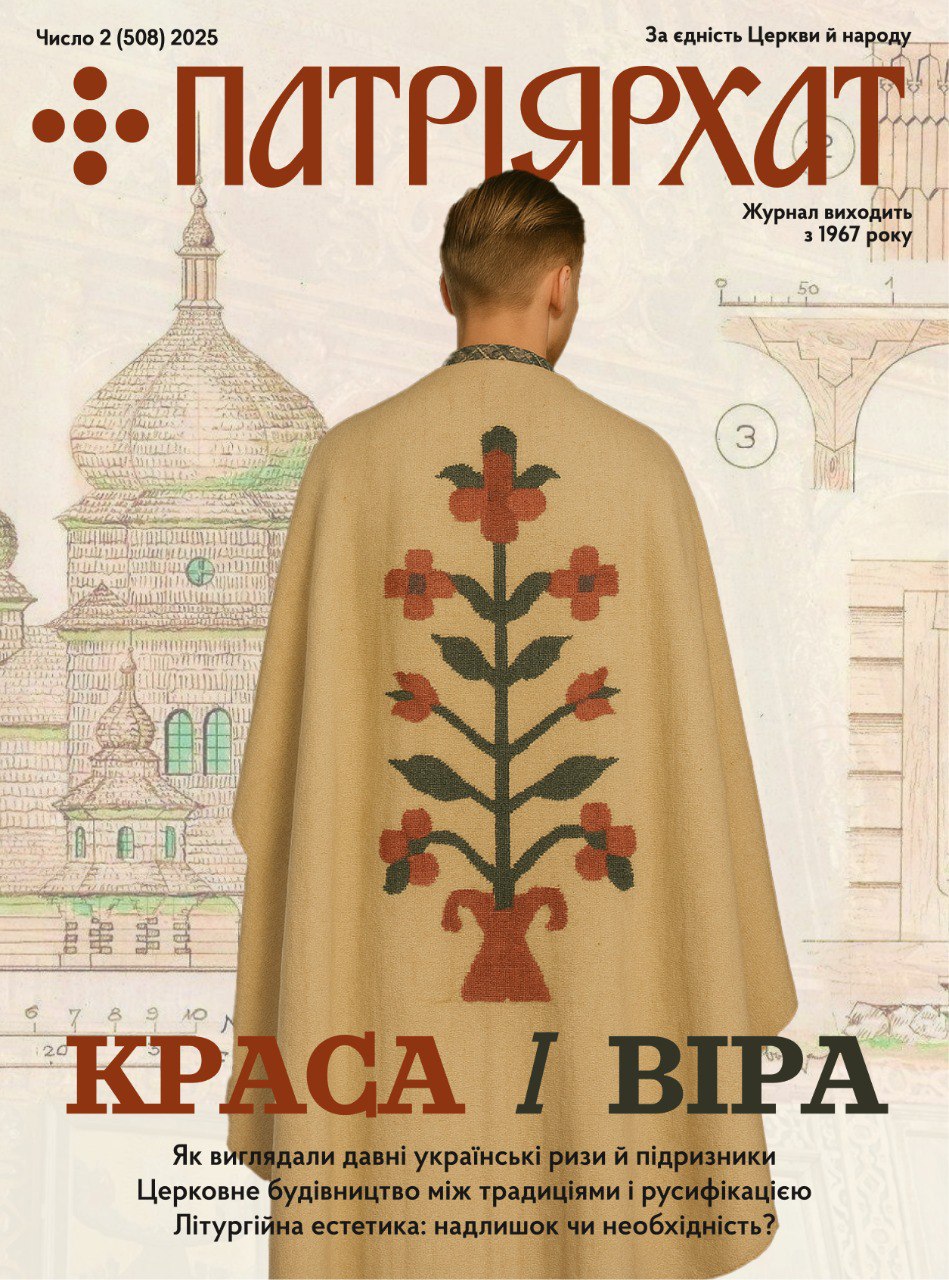St. Sophia Ukrainian Catholic Cathedral in Rome is a landmark achievement of our Patriarch Joseph I, present-day Confessor and Martyr for Christian Unity and Ecumenism. The consecration of St. Sophia in Rome in 1969 coincided with the anniversary of the rule of Princess St. Olha, one thousand years ago in Ukraine. Princess St. Olha is the first female convert to rule a kingdom in the history of the world.
The simplicity of the outward beauty of St. Sophia gives no clue to the beautiful and artistically complex interior. The mosaics are of striking beauty. The mosaic behind the main altar depicts God the Father on the topmost part of the apse, the semi-circular wall. God is surrounded by six Seraphim, the six-winged angels.
On the next tier is the enthroned and crowned “Sophia”, the symbolic Angel of Wisdom with wings of flame. The Blessed Mother and the Christ Child stand on the right hand of the Angel and St. John the Precursor stands on the left hand. The six-winged Cherubim stand guard on the right and left side of the tier.
On the next tier is the Holy Spirit in the form of a Dove, symbolizing the love of the Eternal Father, the Third Person of the Holy Trinity. The Dove is hovering over the Book of Gospels, which symbolizes Christ or God the Son.
The next tier depicts the Altar of Sacrifice of the New Testament with two Angels, holding the “Ripidia” on either side of the Altar. The figure of Christ is distributing Holy Communion, the fruit of His Sacrifice, to the Apostles. On the right side, Christ offers the Bread from the Chalice to six of the Apostles. On the left side, Christ offers the Sacrificial Wine to the other six Apostles. This portrayal is similar to the scene depicted in the Ukrainian Cathedral of St. Sophia in Kyiv built in the 11th century by Grand Prince Yaroslav the Wise. This Ukrainian Grand Prince was known as the “Father-in-law” of Europe because his three daughters married ruling kings from Norway, France, and Hungary.
The next tier consists of some 10 feet of wall space of intricate Byzantine designs and floral patterns. Besides its meaningful depictions, this entire semicircular wall is a symphony of beautiful colors and designs. As a functional aspect, marble seats are attached to this wall extending the entire length of the semicircle.
On the same tier as the Apostles, several Ukrainian saints are depicted on the left hand, namely, Grand Prince St. Volodymyr and his two sons, Saints Borys and Hlib, who were martyred. Their Baptismal names are Roman and David. On the right hand are the figures of St. Cyril and Methodius, the Greek Apostles who taught the Slavs in Eastern Europe. There is also a figure of Servant of God Count Sheptytsky, predecessor of our Patriarch Joseph I, whose cause for canonization is being considered at the present time by the Universal Church.
On the right hand of the lateral arch in the sanctuary are figures of Joshua, successor of Moses, and Moses with the tablets of stone on which are written the Ten Commandments. On the left hand are figures of King David and King Solomon.
In the center of the large dome of St. Sophia is an unusually beautiful mosaic depicting Christ, the Pantocrator, holding the Scriptures. On the next tier encircling Christ are numerous Seraphim, Cherubim, and Archangels. One of the Archangels has the features of Metropolitan Sheptytsky. In the center of this circle and facing the altar is the figure of the Immaculate Mother of God, known as the Orante.
On the next tier of this center dome are figures of 17 Prophets of the Old Testament interspaced by 8 stained glass windows with figures of prominent Metropolitans of our Ukrainian Catholic Church. The four corners which finish the dome are symbols of the four Evangelists: Saint Matthew, Mark, Luke and John.
The beautiful marble altar and marble floors are added attractions as are the several balconies. To the right of the main altar is the beautiful paneled sacristy.
The art work for these beautiful mosaics of St. Sophia in Rome was done by the Ukrainian artist, art critic and writer, Sviatoslav Hordynsky, of New York. His book on the Ukrainian Icon was recently published in both Ukrainian and English.
Recently added in St. Sophia is the beautiful iconostasis. The top tier of iconostasis depicts the 12 major feasts of the Ukrainian Catholic Church, namely, the Nativity of the Blessed Mother, the annunciation, the Birth of Our Lord, the Circumcision, the Epiphany, the Entrance into Jerusalem, the Resurrection of Our Lord, the Ascension, the Descent of the Holy Ghost, the Assumption, the Transfiguration, and the Pokrov (Protection of our Lady). The second tier contains four main icons: Christ the Teacher, St. Joseph, Mary, the Mother of God, and St. Nicholas of Myra. The third tier depicts the sacrifices of the Old Testament which prefigure the New Testament: Sacrifice of Cain and Abel, of the High Priest Melchisedech, of the Patriarch Abraham, and of Moses.
The art work on the iconostasis was done by Ukrainian Studite Father Juvenali Mokryckyj.
On the lower floor of St. Sophia is a large auditorium and stage. The walls are enhanced by photographs and paintings of many Ukrainian intellectuals, artists, professionals, and leaders, including Kozak Hetmans; To the right of this auditoriums’ is a large crypt where several prominent Ukrainians are buried.
In back of St. Sophia and attached to it are three rooms and one apartment for visiting students and professors.
During the consecration of St. Sophia in Rome, the relics of Pope St. Clement I were placed on the marble altar. This Pope was a first century martyr and the third successor of St. Peter. He died in the Ukrainian Black Sea region and his relics were brought back to Rome by St. Cyril in the 9th century. St. Cyril and his brother St. Methodius, taught the Slavic people and introduced the Cyrillic alphabet, a Slavic adaptation of the Greek and the basis of the Ukrainian language.
Another Pope, Clement VIII, looms large in the history of Ukraine. He signed the Union of Brest in 1595 with the Ukrainian Church. Pope Clement hailed this treaty as bulwark against Calvinist propaganda and as a defense against Turkish invaders into Christian lands. This treaty also guaranteed the autonomy of the Ukrainian Catholic Church. This autonomy must be returned immediately by the Holy See and the Roman Curia as an act of obligation and restitution as decreed by Vatican Council II; this means recognizing the legitimate rights of our Patriarch Joseph I, his Synod of Ukrainian Catholic Bishops, and their Canon Law.
Anything less is a continued grave injustice, the magnitude of which is increased by the Vatican’s continued interference in Ukrainian affairs.

